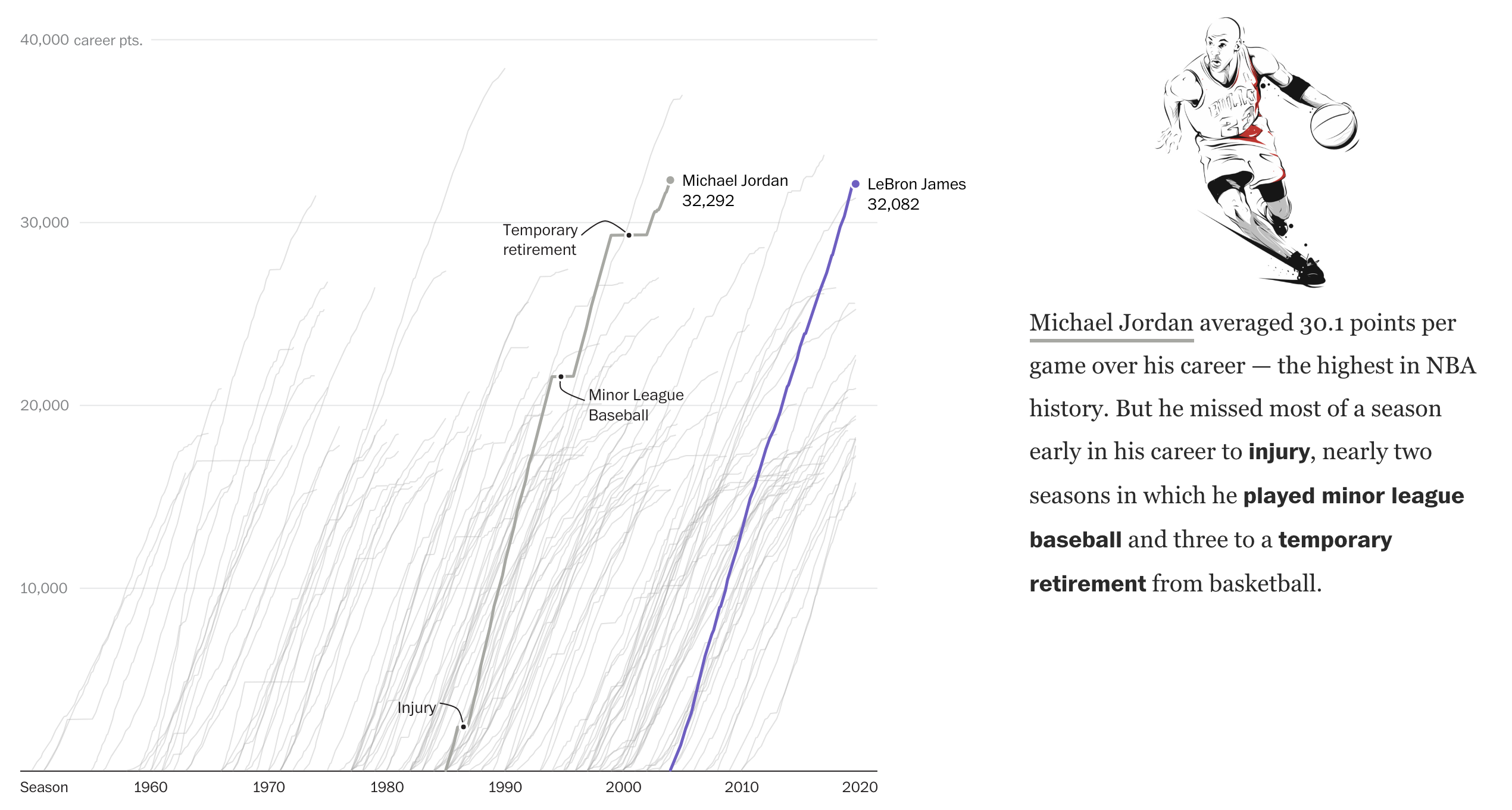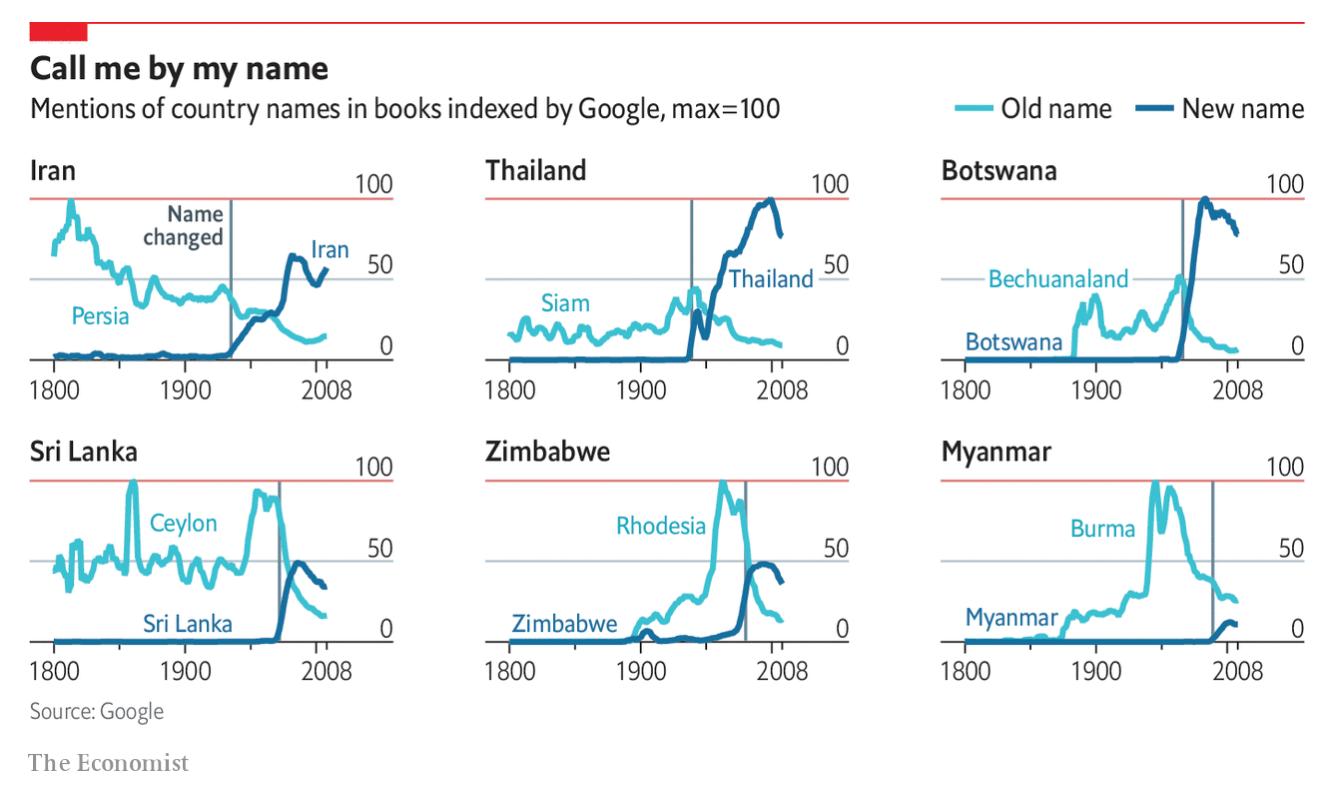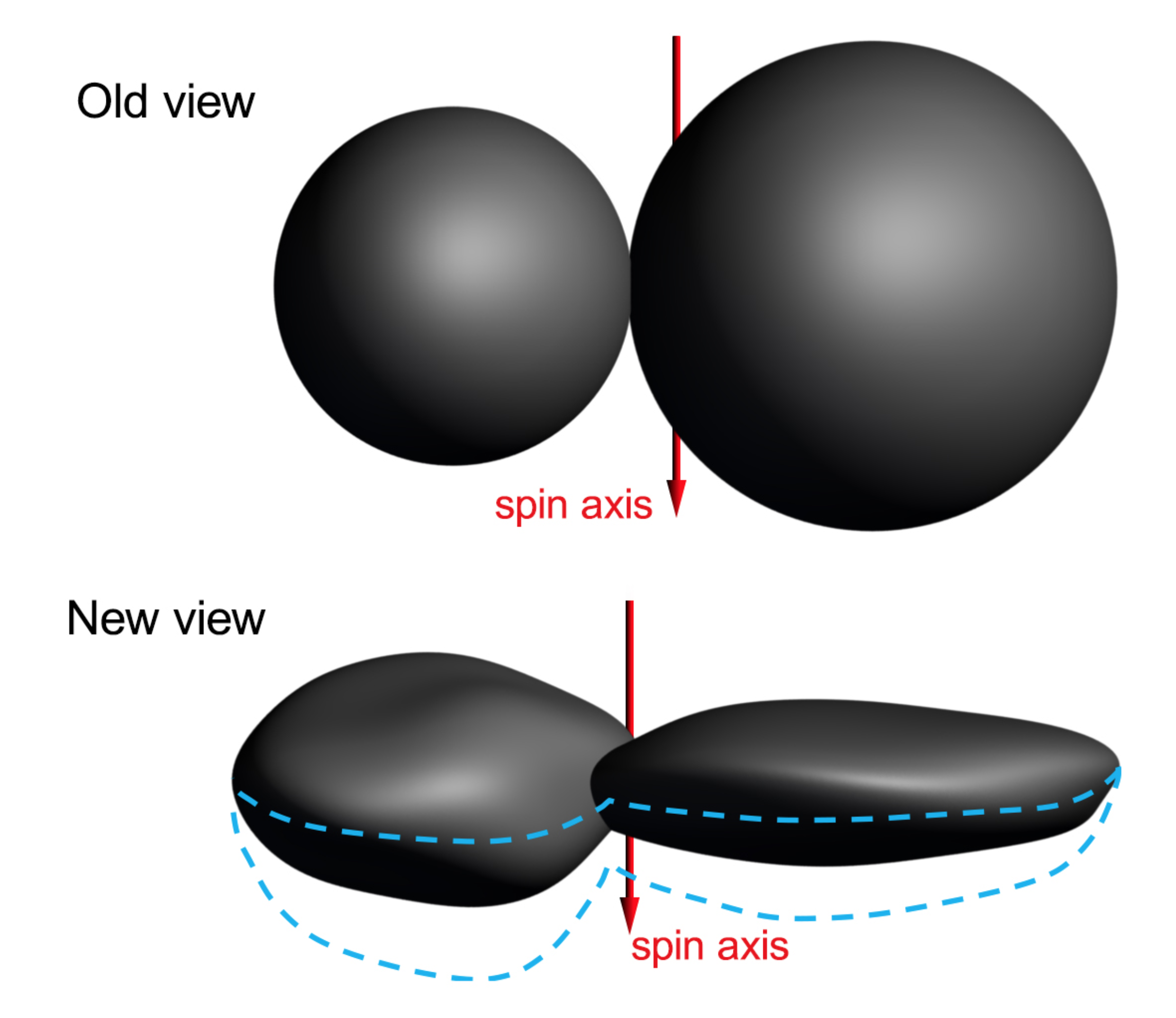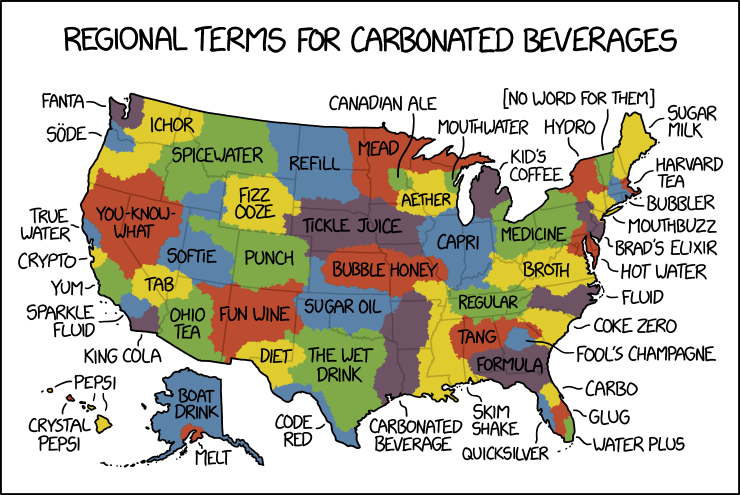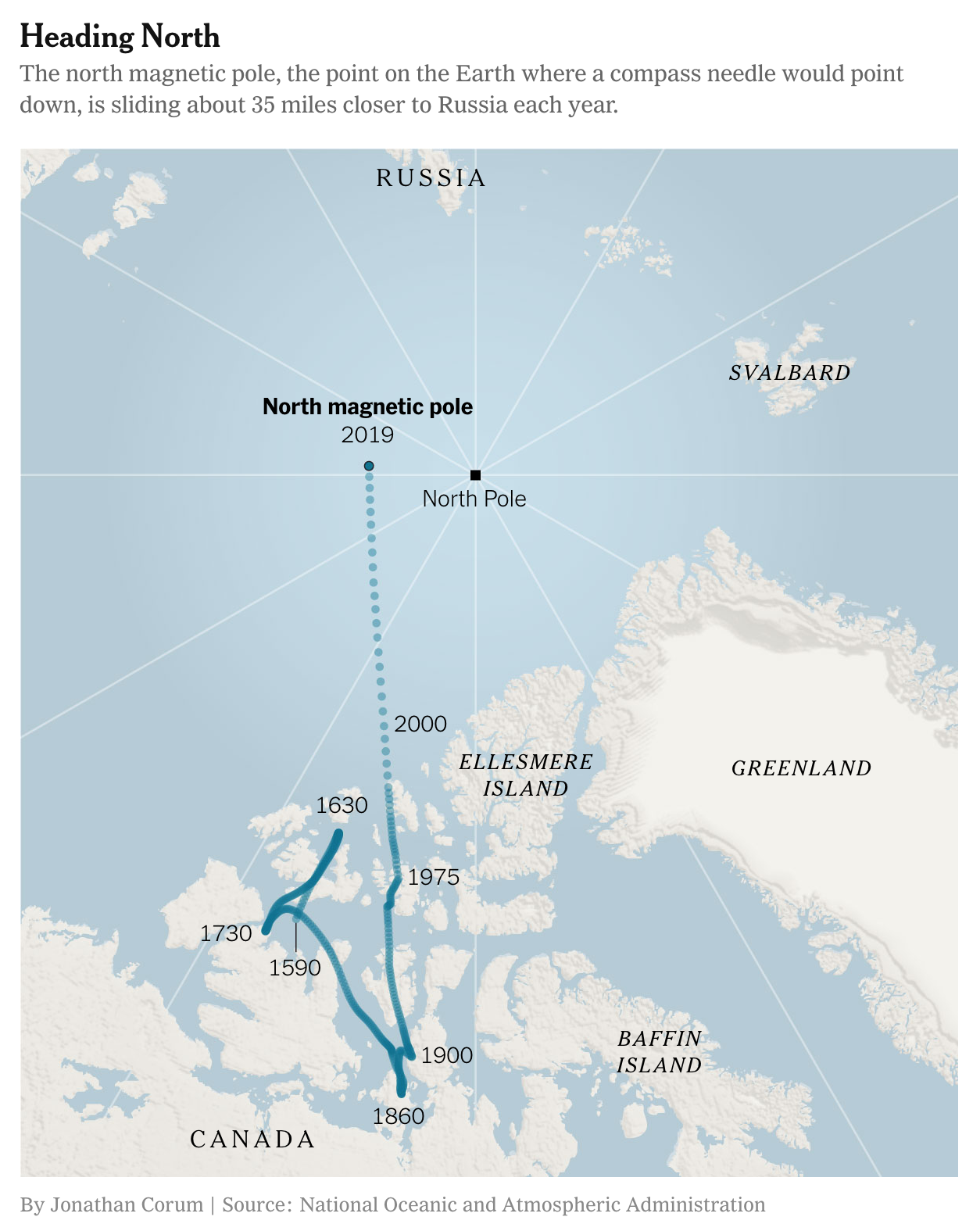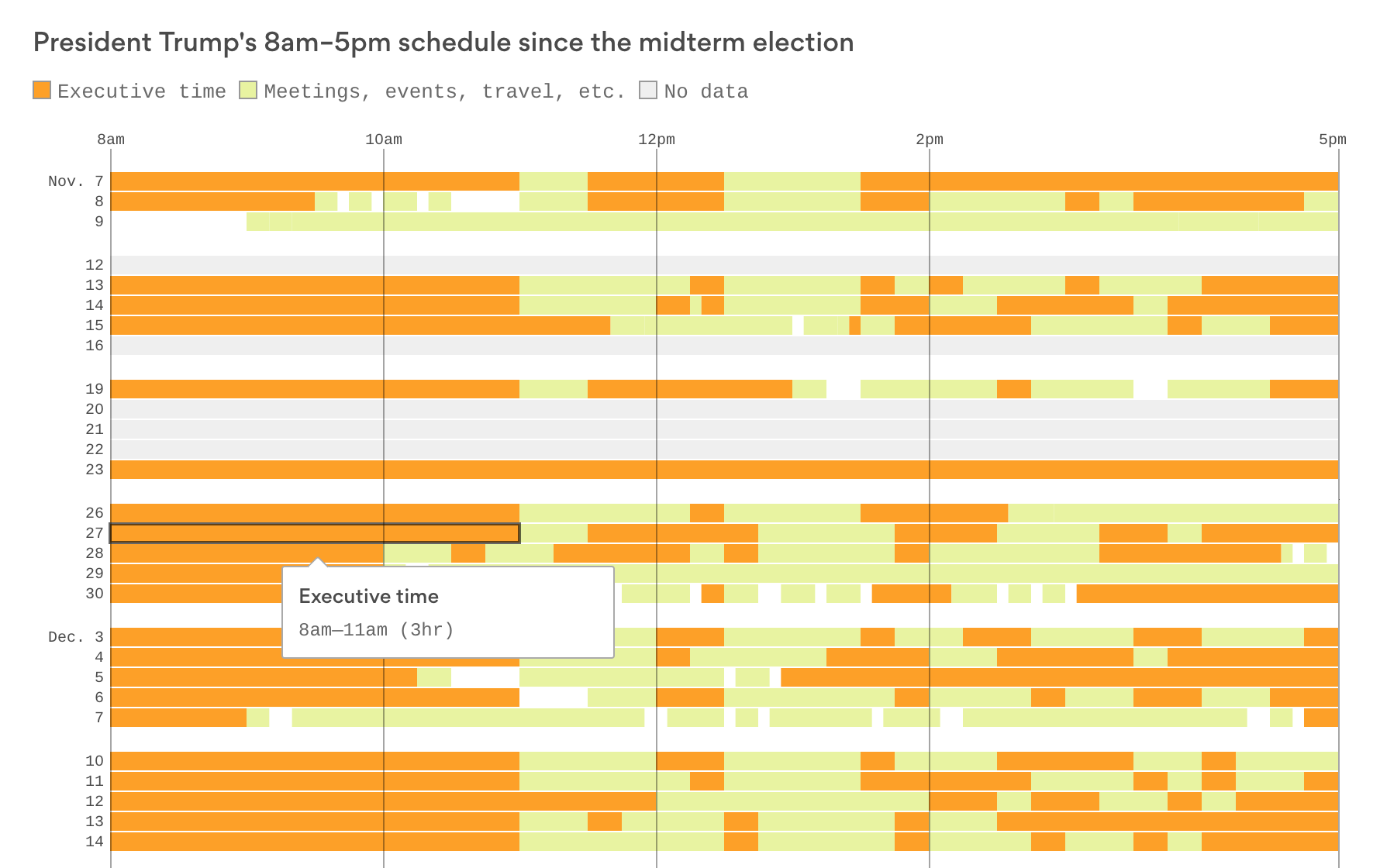On Tuesday the San Diego Padres signed Manny Machado to a guaranteed contract worth $300 million over the next ten years—though he can opt out after five years. Machado was one of two big free agents on the market, the other being Bryce Harper. One question out there is whether or not these big contracts will be worth it for the signing teams. This piece yesterday from the New York Times tries to look at those contracts and how the players performed during them.
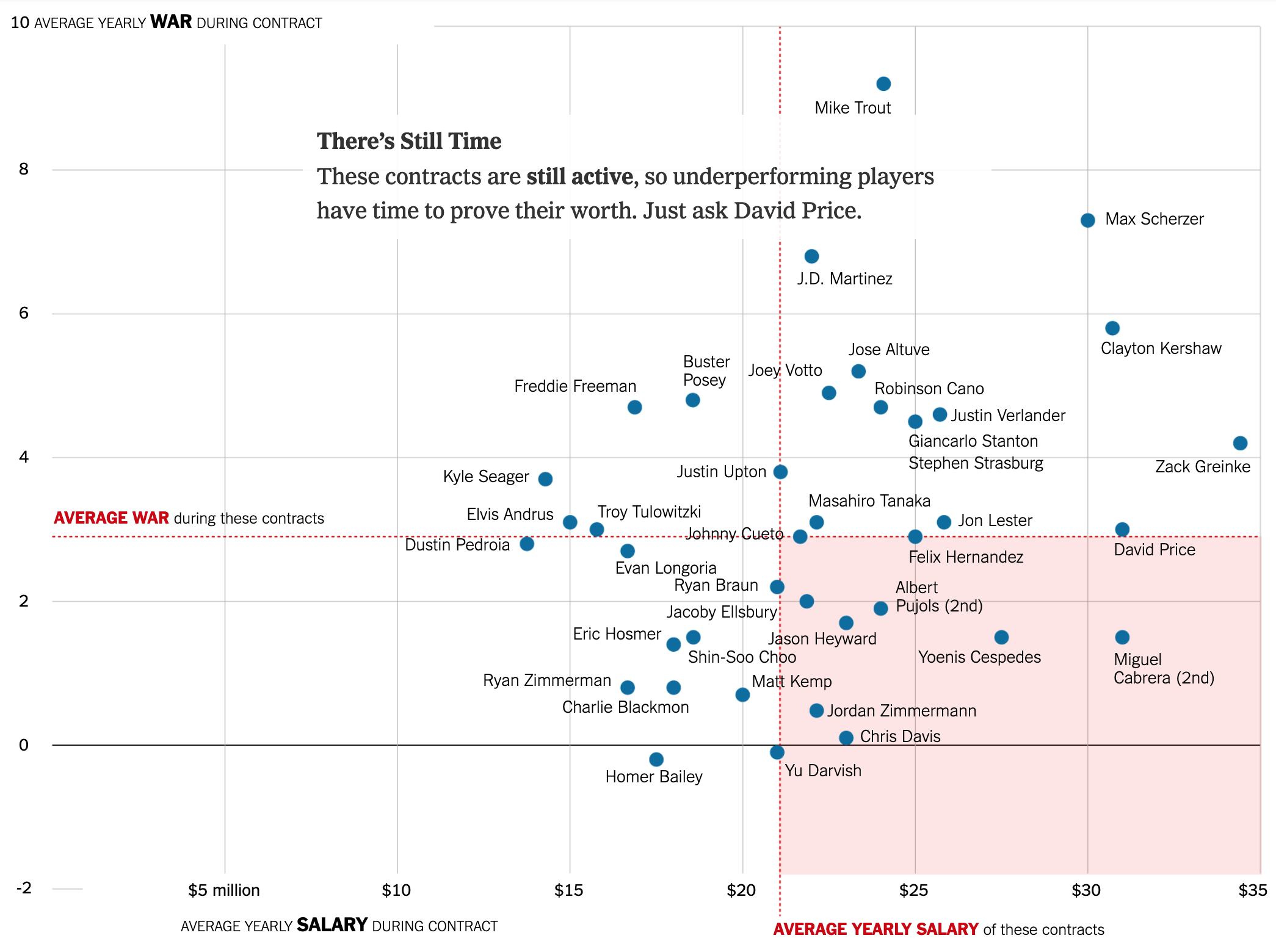
Like the piece we looked at Tuesday, this takes a narrative approach instead of a data exploratory approach—the screenshot above is halfway through the read. Unlike the Post piece, this one does not allow users to explore the data. Unlabelled dots do not reveal the player and there is no way to know who they are.
Overall it is a very strong piece that shows how large and long contracts are risky for baseball teams. The next big question is where, for how long, and how much will Bryce Harper sign?
Credit for the piece goes to Joe Ward and Jeremy Bowers.


